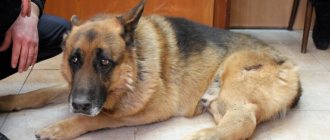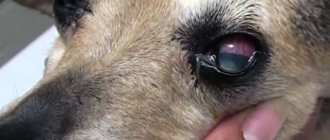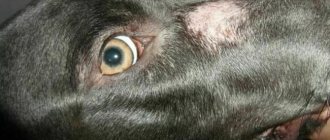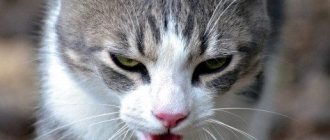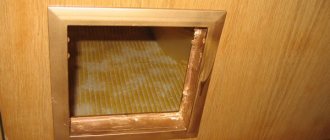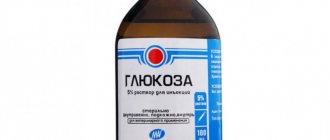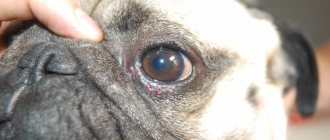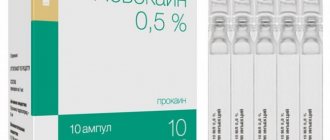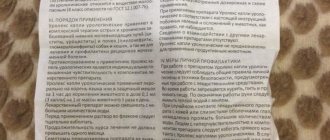The article was finalized and certified by a veterinarian: Yuri Igorevich Dubovitsky Article updated: 06/01/2020
Millions of people from all over the world suffer from blood pressure problems. And this problem, unfortunately, affects not only people. Our pet cats are not immune from hypertension and hypotension (i.e., high and low blood pressure). In this article we will find out what blood pressure should be normally in animals, and also look at the causes and symptoms of blood pressure problems.
A little about blood pressure in cats
Blood pressure in cats
is an indicator that reflects the level of blood pressure on the walls of the arteries.
Blood pressure in cats is measured in millimeters of mercury. There are systolic pressure
- the pressure that is reflected on the screens of special devices when the heart contracts, and
diastolic
pressure - the pressure with which the blood presses on the arterial walls at the moment the heart relaxes.
That is why, when talking about blood pressure, two numbers are always mentioned, for example, 124/83 (where 124 is systolic pressure and 83 is diastolic pressure). what normal blood pressure is in cats
: it should be approximately the same as in humans – 120/80.
To be more precise, in a healthy cat, arterial systolic pressure can normally range from 105 to 135 mm Hg, and diastolic pressure - from 65 to 95 mm Hg
.
If the cat’s values are consistently exceeded, then we can say that the animal suffers from hypertension; if they are lowered, it is hypotension. And both of these diseases are very dangerous.
What can cause high blood pressure?
Arterial hypertension in cats is diagnosed when blood pressure exceeds 150/95-110 mm Hg. Art. In this case, the animal is closely monitored and data is regularly recorded. If the values fluctuate at 160/120, complex drug therapy is urgently prescribed. A blood pressure of 180/120 is considered critical. With such indicators, a hypertensive crisis can occur at any time. In this case, the cat is hospitalized and given emergency care. Based on etiology, there are systemic, secondary and pulmonary hypertension in cats.
Common causes of high blood pressure in cats are:
Indicators may be elevated in animals suffering from diabetes.
- cardiac and vascular pathologies;
- kidney and adrenal dysfunction;
- dysfunction of the thyroid gland;
- progression of systemic pathologies, for example, diabetes.
Portal hypertension, in which high pressure is recorded in the portal veins, can be caused by the following pathologies:
- thrombosis of large vessels;
- splenomegaly;
- hepatitis of various types;
- cirrhosis or fibrosis of the liver;
- cardiovascular diseases.
Return to contents
Hypertension – high blood pressure
High blood pressure in a cat brings a lot of troubles: hypertension affects the animal’s heart, kidneys, nervous system and eyes. As a rule, this disease is diagnosed in elderly pets (over 10-12 years old). It happens that arterial hypertension acts as an idiopathic disease, when it is impossible to identify what led to the problem. But still, high blood pressure in cats is most often caused by the following reasons:
- heart problems (eg, heart failure);
- Endocrine diseases (hyperthyroidism, adrenal tumors, diabetes mellitus, Cushing's syndrome);
- Kidney and liver failure;
- Overweight.
High blood pressure in a cat can be determined by the following signs:
- Deterioration of vision (the cat bumps into walls, furniture, etc.), eye hemorrhages, dilated pupils;
- The gait becomes unsteady, the once graceful cat waddles;
- The appearance of unusual behavior (the animal may meow heart-rendingly or sleep constantly, look anxious, not respond to its name, etc.);
- Severe noisy shortness of breath;
- Swelling of the limbs;
- Vomiting and loss of appetite;
- Increased heart rate (more than 230 beats per minute);
- In some cases, when a cat has high blood pressure, nosebleeds are possible.
If your pet's blood pressure is higher than normal, you should definitely consult a doctor. You don’t need to give your cat the first blood pressure pills you come across on your own; it’s better to entrust the choice of medications to a specialist. The fact is that blood pressure at home from antihypertensive drugs will quickly drop, but will certainly rise again if the cause of the disease is not eliminated (for example, diseased kidneys remain untreated). It should also be noted that a cat with established hypertension should be regularly shown to a veterinarian (at least once every 3-4 months) to monitor its health status and adjust treatment. To prevent the development of hypertension and prescribe timely treatment, an elderly cat should be brought to the clinic at least 2 times a year.
How can I help you
Treatment is prescribed only by a veterinarian based on examination and collection of information, interviewing the owner of the mustachioed patient. Therapy is carried out in two parallel or sequential stages - the underlying disease is treated and blood pressure levels are normalized. During treatment, the functioning of the renal system and eyes must be monitored. Often, elimination of the underlying disease leads to normalization of blood pressure and the need for antihypertensive therapy disappears. The duration of the treatment course is determined strictly by a veterinary specialist. Often, antihypertensive medications remain on an ongoing basis.
- amlodipine (90-180 rubles, depending on the number of tablets in the package): orally from 0.5 to 1.25 mg/animal or 0.2 mg/kg once a day or once every 48 hours (two days). It is advisable to divide the tablet with a special tablet knife to reduce the risk of dosage violations. It is not addictive and the effectiveness of long-term use does not decrease.
- enalapril, benazepril (65-300 rubles, depending on the manufacturer) : orally 0.25-0.5 mg/kg of animal weight once a day. Often used in combinations at a dosage of 1.25-1.5 mg/animal per day. In very severe cases, the dose can be doubled, and after stabilization, the dose can be returned to normal levels.
- lisinopril (within 120-150 rubles/pack of 30 tablets): initial maintenance dose of 0.125 mg/kg of body weight, maximum permissible dose during the day – 0.5 mg/kg. Monitoring of kidney function is required. The course lasts 1-2 months, then you need to replace it with drugs that can be taken for a long time.
- sodium nitroprusside : for emergency relief of hypertensive crisis. The dosage is determined only by a specialist and is administered only in a hospital! Dose: 1.5-5 mcg/kg body weight at a rate of 1 minute. Strict monitoring of the animal’s condition is indicated, because a sharp drop in pressure can lead to disruption of brain function (ischemia).
In the presence of edema, diuretics are prescribed:
- furosemide (about 30 rubles/pack of 10 ampoules): 0.5-1 mg/kg per day orally or intramuscularly (injections act faster). The duration of use is determined by the veterinarian based on the general condition,
- torasemide (about 250 rubles/pack of 20 tablets): orally 0.05-0.1 mg/kg once a day. There are cats that are not sensitive to it - there is no pattern, just an individual reaction.
Hypotension – low blood pressure
If hypertension occurs more often in cats, usually at an advanced age, then young animals also suffer from hypotension. Low blood pressure also does not occur out of nowhere. The disease is caused by:
- State of shock;
- Excessive blood loss (internal and external bleeding);
- Stress;
- Vitamin-poor diet;
- Heart problems;
- Complications after anesthesia.
Low blood pressure in a cat can be calculated by the following signs: the pet is constantly lethargic and sleepy, breathes heavily, eats little, and its paws are cold to the touch.
The cat may feel sick, and vomiting is also possible. The pulse of an animal with hypotension can be either high or low (less than 80-90 beats per minute), as well as arrhythmic, thread-like, and even not palpable at all. With hypotension, fainting cannot be ruled out. Fortunately, not many cats suffer from low blood pressure; hypertension is much more common in purring cats. But if your pet’s blood pressure is systematically low, you will definitely need to see a doctor. It is fundamentally wrong to believe that low blood pressure in a pet is a banal loss of strength that will go away on its own. One of the most dangerous complications of hypotension is decreased blood flow to the brain and heart.
Composition and principle of operation
The drug Amlodipine consists of an active component - amlodipine benzoate, the action of which is aimed at blocking calcium channels. Under its influence, the smooth muscles of the walls of blood vessels relax and high blood pressure decreases. Therefore, the medication is indicated for cats that suffer from hypertension. Amlodipine is not addictive and is suitable for long-term use, so it is often prescribed for chronic hypertension.
In addition to the antihypertensive effect, the medicine has antianginal, antispasmodic and vasodilating effects. Plus, the medicine relieves the symptoms characteristic of ischemic myocardial disease, increases the excretion of sodium ions from the body, the volume of urine and inhibits the process of platelet consumption. The therapeutic effect is observed 1-2 hours after taking the dose of the drug and continues for 24 hours.
The main substance acts gradually, smoothly reducing elevated blood pressure levels and preventing left ventricular hypertrophy.
How to find out a cat's blood pressure at home
The surest way to recognize hypertension or hypotension in the early stages is to measure your cat's blood pressure. But how to carry out such a procedure at home? The only way out is to purchase a veterinary tonometer, which will determine not only the animal’s blood pressure, but also its pulse rate. The measurement must be carried out when the animal is in a calm state, attaching the cuff to the base of the tail or to the forearm. If for some reason the cat is unnerved, blood pressure readings will certainly be elevated. Veterinarians advise taking at least 3-5 measurements, considering the most recent data to be the most accurate. But veterinary equipment is very expensive (more than $1,000), so it’s better to contact a veterinary cardiologist, it will be cheaper and more reliable.
Some owners measure blood pressure in cats using a human tonometer, but it can only be used if the animal is large enough, since the diameter of the smallest children's cuff is at least 10 cm. So only a big guy can measure blood pressure correctly with a conventional device Maine Coon, and for a delicate pet you will have to purchase a veterinary apparatus.
What should the owner do if there is neither an ordinary human, nor even a veterinary tonometer? Then the only way out is to visit a veterinarian’s office, where measuring pressure can cost about 200-400 rubles, or calling a specialist with a device to your home.
Symptoms of horse racing
Hypertension in cats in the initial stages of development is often asymptomatic. But as the animal’s condition progresses, it becomes noticeably impaired. The cat becomes lethargic, apathetic, sleeps a lot, sometimes refuses to eat, and moves little. Other signs of high blood pressure include:
- dilated pupils;
- abundant vascular network on the cornea;
- visual impairment, retinal detachment;
- photophobia;
- disorientation in space, staggering gait;
- dyspnea;
- formation of edema on the paws;
- convulsions;
- causeless, prolonged meowing.
If the pressure rises to 180/120 mmHg. Art., the risk of developing a hypertensive crisis increases. The pet experiences a coma, increased heart rate, shortness of breath, and profuse drooling.
With hypotension, blood pressure drops to 90/60 or less. Sudden changes accompanied by characteristic symptoms negatively affect the general condition of the cat. When the indicators decrease, the animal exhibits the following signs:
- slow heart rate;
- drowsiness, weakness;
- fainting;
- tremor of the limbs;
- blanching of the mucous membrane.
Return to contents
